Aboriginal and Treaty Rights
Develop an appreciation of the complex perspectives and issues related to treaties and rights.
To begin, select a category from the menu.
In this activity you will have an opportunity to discover differing perspectives on Aboriginal and treaty rights and develop an appreciation for the complexity of this topic. Canada’s Constitution (1982) recognizes three groups of Aboriginal peoples, but each of these groups is diverse, including individuals with many different goals and priorities. Aboriginal and treaty rights stem from historical, traditional, cultural and spiritual connections to the lands occupied and shared by Indigenous peoples since time immemorial.
Bert and Jesse are having a staff room discussion…

They are discussing the Memorandum of Understanding for First Nations in Alberta signed by the Grand Chiefs of Alberta’s three treaty areas, the federal Aboriginal Affairs Minister and Alberta’s Ministers of Education and Aboriginal Affairs. Bert wonders if this agreement also includes the Métis and Inuit who live in Alberta. Jesse doesn’t know. He asks how many First Nations groups there are in Alberta. Bert doesn’t know, but he thinks there are three treaty areas in the province. They realized they have little concrete knowledge of the complex topic of treaty rights for First Nations, Métis and Inuit in Alberta.
What do you know about the history and issues concerning Aboriginal and treaty rights in Alberta?
Reflection Statement
The traditional territories of the diverse First Nations Peoples in what is now known as Alberta include lands in Treaty 6, Treaty 7 and Treaty 8. Each area’s treaty was signed prior to 1905. In Alberta there are six Métis zones, represented by the Métis Nation of Alberta and eight Métis settlements, administered by the Métis Settlements General Council. Alberta is the only province where Métis have a land base enshrined in the provincial constitution. The matter of treaties and rights is complex and involves many unresolved issues that affect the lives of Inuit, Métis and First Nations peoples on a daily basis.
How might these treaty, governance and rights issues affect you and your students?
Billy Joe Laboucan shares information that has been passed on to him about historical treaties in his area.
The First Nation and Métis speakers in these interviews recount the treaty negotiations described by their ancestors and discuss contemporary actions related to negotiated rights.
Select a video.
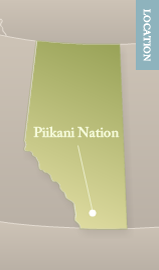
Audrey Weasel Traveller | Piikani | Piikani Nation
Audrey Weasel Traveller from Piikani Nation, part of the Blackfoot Confederacy, explains how she focuses on her identity to avoid becoming “a creation of politics.”
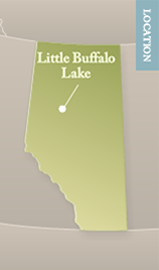
Billy Joe Laboucan | Woodland Cree | Little Buffalo Lake
Cree linguist Billy Joe Laboucan shares information that has been passed on to him about historical treaties in his area.
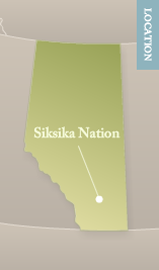
Andrew Bear Robe | Siksika | Siksika Nation
Dr. Andrew Bear Robe from the Siksika Nation, who has focused his academic career on treaty issues and legislation, shares thoughts about treaties at the Circle Alberta Gathering 2008.
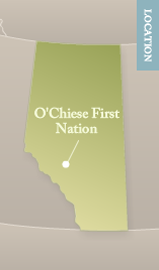
Theresa Strawberry | Saulteaux | O’Chiese First Nation
Theresa Strawberry, Saulteaux educator from O’Chiese Reserve near Rocky Mountain House, discusses misunderstandings caused by language barriers during treaty negotiations.
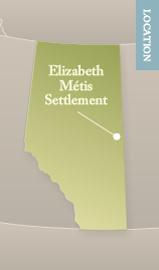
Phyllis Collins | Métis | Elizabeth Métis Settlement
Phyllis Collins talks about her work on the legislation for the Métis Settlements in Alberta.
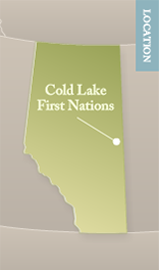
John Janvier | Dene Suliné | Cold Lake First Nations
John Janvier, Dene Suliné from Cold Lake First Nations, provides a First Nations perspective on treaties as he shares what he was taught by his father about the signing of Treaty 6.
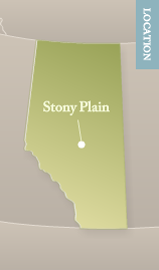
Treaties
Teacher Charlene Bearhead uses video clips of Dr. Harold Cardinal speaking about treaties in a Social Studies lesson with students from Connections for Learning, Parkland School Division. Dr. Cardinal (1945–2005) was a Cree writer, political leader, teacher, negotiator and lawyer.
Select a resource type from the list.
Web Links
While some First Nations, Métis and Inuit experts have recommended these web links, they are not authorized by Alberta Education.
The Treaties. Alberta Online Encyclopedia
This web page provides information from a Euro-Canadian perspective on treaty-making and on Treaties 6, 7 and 8.
Treaties and agreements. Crown-Indigenous Relations and Northern Affairs Canada. Government of Canada.
This web page provides an introduction to treaty rights from the perspective of the federal government with links to legislation, land claims, timelines, maps and publications.
Aboriginals: Treaties and Relations. Canadiana by CKRN and Canadiana Héritage.
This website provides extensive resources from a Euro-Canadian perspective on events from 1492 to 2003. Resources include thematic narratives, historical documents, images and maps. (Enter search term: Aboriginal: Treaties and Relations).
Treaties, Surrenders and Agreements. Library and Archives Canada. Government of Canada.
An extensive, but not complete, collection of treaties, surrenders, and agreements that is part of the Department of Indian Affairs and Northern Development fonds.
Treaties with Indigenous Peoples in Canada. The Canadian Encyclopedia.
This article provides information about treaties and agreements in Canada between the Crown and First Nations, Métis and Inuit. In addition to articles, the online encyclopedia includes images, videos, timelines, interactive maps, educators’ tools and study guides.
Documents
While some First Nations, Métis and Inuit experts have recommended these web links, they are not authorized by Alberta Education.
A Declaration of First Nations. Contemporary Issues
Signed in 1981 by the National Indian Brotherhood, this is a declaration of rights and responsibilities that come from the Creator.
Aboriginal and Treaty Rights: A Personal Perspective. Sykes Powderface
In a personal perspective, Elder Sykes Powderface of Chiniki First Nation discusses land-related rights and considers these questions: What are these rights? Who do the rights apply to? Who is responsible for implementation? Who has jurisdiction?
Métis Rights: A Personal Perspective. Donna and Richard Leask
In a personal perspective, Métis Donna Leask considers these questions: Who are the Métis? What is scrip? What is the impact of the Métis Nation of Alberta (MNA)? What are Métis cultural and land rights?
Inuit Rights: A Personal Perspective. Eileen Marthiensen
In a personal perspective, Inuit Eileen Marthiensen considers these questions: Who are the Inuit? What are the Inuit land claims agreements? What is the Inuit Lifelong Learning Model and how does it relate to community well-being?
The Métis Settlements of Alberta. Aboriginal Perspectives Teacher Resource
In 1938 the Alberta government established eight Métis Settlements with a land base of 1.25 million acres. In 1990, the Alberta government passed legislation for government on the Métis Settlements. This excerpt from the Aboriginal Perspectives Teacher Resource (Aboriginal Studies 10) provides historical background information on Métis Settlements legislation and government.
Métis and Non-Status First Nations Land Claims. Contemporary Issues
Métis and First Nation people without status make up a significant proportion of the First Nations, Métis and Inuit population in Canada. This excerpt from Contemporary Issues (Aboriginal Studies 30) explores non-status land claims issues of First Nations People and the land claims of Métis people.
Human and Aboriginal Rights. Contemporary Issues
Human rights are those rights a person has simply by virtue of being human; these rights are an inherent part of human existence. Aboriginal rights belong to a group of people because of their long history of occupying and using the land; these rights often involve cultural and land rights. This excerpt from Contemporary Issues (Aboriginal Studies 30) explores human and Aboriginal rights, collective and individual rights, and inherent rights.
Treaties: Contemporary Land Claims. Aboriginal Perspectives Teacher Resource
In 1973 the federal government recognized two classes of land claims, comprehensive and specific. This excerpt from the Aboriginal Perspectives Teacher Resource (Aboriginal Studies 10) provides background information on comprehensive and specific land claims and on settlement processes.
Treaties: The Major Treaties in Canada, 1850–1921. Aboriginal Perspectives Teacher Resource
This background information on the numbered treaties is adapted from a publication by Indian and Northern Affairs Canada. The overview of treaties, which is an excerpt from Aboriginal Perspectives Teacher Resource (Aboriginal Studies 10), covers Treaty Nos. 1 through 11 and sets them in a historical context.
MOU for First Nations Education in Alberta
**Still to come.**
MOU for First Nations Education in Alberta (Long Term Strategic Action Plan)
**Still to come.**
Select a video from the list.
Beyond a Dialogue on Treaties
Dr. Andrew Bear Robe, a specialist in political science and Aboriginal law, speaks after the opening ceremony for the Circle Alberta Gathering 2008. He shares his thoughts about the need for more dialogue on treaties at all levels of government.
Behind the Badge
Behind the Badge takes a balanced look at the historical role of the Royal Canadian Mounted Police (RCMP) in relationship to First Nation, Métis and Inuit communities. Current issues in policing are presented in scenes from Lac La Biche, Wabasca-Desmarais, Kikino Métis Settlement and O’Chiese First Nation. Behind the Badge explores how re-establishing trust, increasing communications, and understanding First Nations, Métis and Inuit cultures can create safer communities today and fulfill the promises of yesterday.
Bearpaw Media Productions of Native Counselling Services produced this video in 2005 with funding from the Alberta Law Foundation.